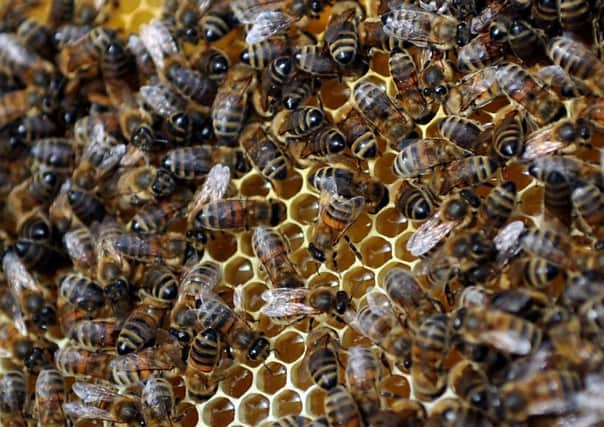Beekeeping: Learning how to use wax the hard way


If you were poor you made do with something not much better than a bit of string dipped repeatedly in animal fat. If you were rich, you got your candles made out of beeswax.
The sheer quantity of beeswax needed to supply wealthy houses and cathedrals must have been enormous. There’s plenty of evidence that for much of history beekeepers were every bit as interested in the wax that bees produce as they were in any honey crop. Honey was a nice luxury, a very valuable preservative and an important antiseptic. Wax was close to an essential.
Advertisement
Hide AdAdvertisement
Hide AdIt takes a lot more energy for a bee to make wax than it does to make honey. More than three times as much work for the same quantity. The bee has to process all that pollen and nectar it collects and turn it into wax via glands on its stomach. That’s hard work and so is using it to make the classic hexagonal structures of beeswax.
Beekeepers tend to treat the work that bees have done to create wax structures with a lot of respect. If you take too much of that from the beehive then you can do a lot more harm than you can by taking honey.
Nevertheless it’s impossible to get honey out of the hive without also taking some of the wax. Within a hive bees store their honey inside wax cells capped off by even more wax. You have to cut off some wax to get at the honey and when you’ve finished there’s quite a lot of waxy mess left.
I was reluctant to waste all the hard work the bees had undertaken and thought I ought to have a go at making wax candles. I might not, like previous generations of beekeepers, be required to supply a set amount of wax to the local church, but I felt I really should still be putting it to good use.
Advertisement
Hide AdAdvertisement
Hide AdI started out with the usual unattractive mixture of bits of wax, some honey and quite a lot of dirt that the bees hadn’t been able to clean up themselves. A bit of gentle melting in a very old enamel saucepan was my first move. I thought it best not to use too much heat or to take my eye off it as hot wax has a tendency to burst into flames.
I soon had a saucepan full of three different substances separated into layers. I took it off the heat and looked at it. There was a layer of clear liquid which was quickly beginning to cool and turn into a creamy solid. Then there was a layer of poor quality honey and below that a layer of dirt.
I poured the clear liquid off the top into moulds the shape of candles. Then I poked a wick into the hot wax and waited for my candles to dry out and magically appear whilst I strained off the remaining honey and cleaned up the mess I’d created in the process.
For once I managed to apply a bit of patience to the process and I waited overnight to see what I’d produced. It looked quite good. The candles were creamy white. But they were stuck solidly to the mould. I gently warmed the bottom of the moulds to pull them out.
Advertisement
Hide AdAdvertisement
Hide AdThey stood proudly in the kitchen with their wicks showing nicely above the beautiful colour of the beeswax. Well... they stood wonkily as the bottoms weren’t quite even but it was my first attempt and I was very proud of it. So I lit one of them. It burned with a nice clear flame and made a lovely smell which I thought would go down really well the next time we had people round for dinner. Then the light spluttered and went out. I relit it. The same thing happened. My candles didn’t burn.
Turns out that you need to insert the wick under tension and that there’s an art to making wax candles that requires a certain amount of skill. That’s not one of those commodities that I have ever been over endowed with. Perhaps I’ll have more luck making furniture polish.